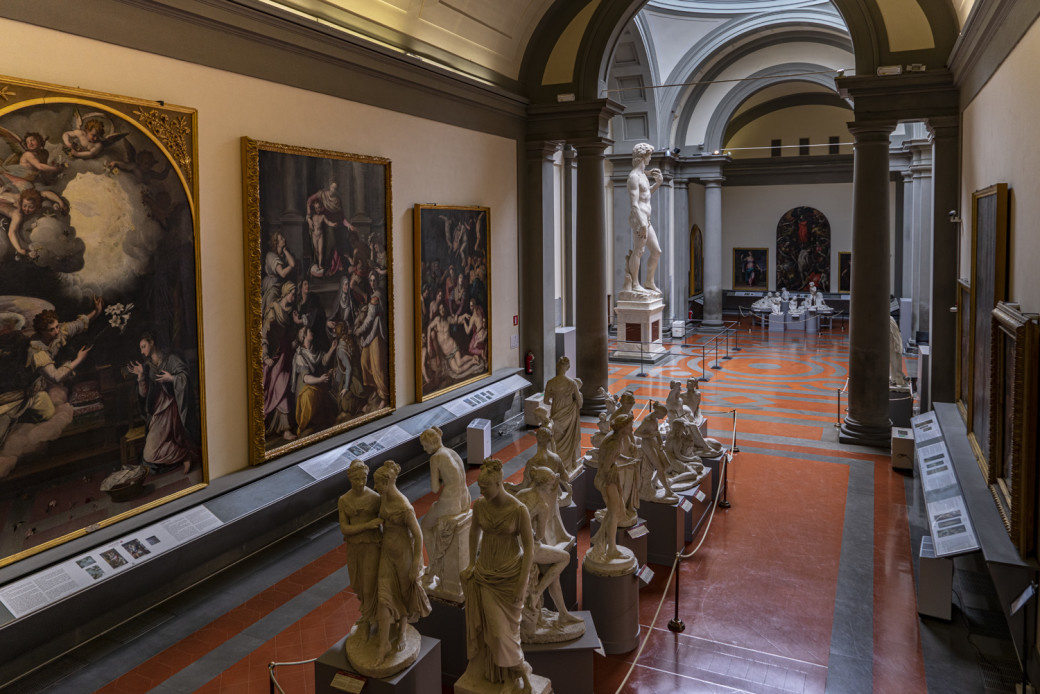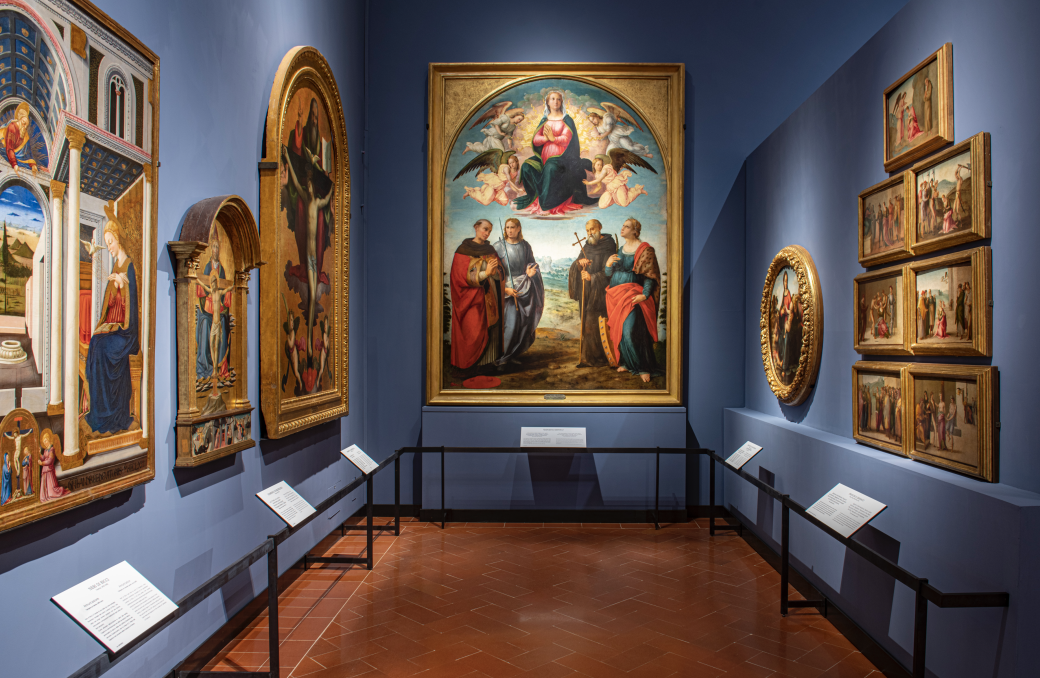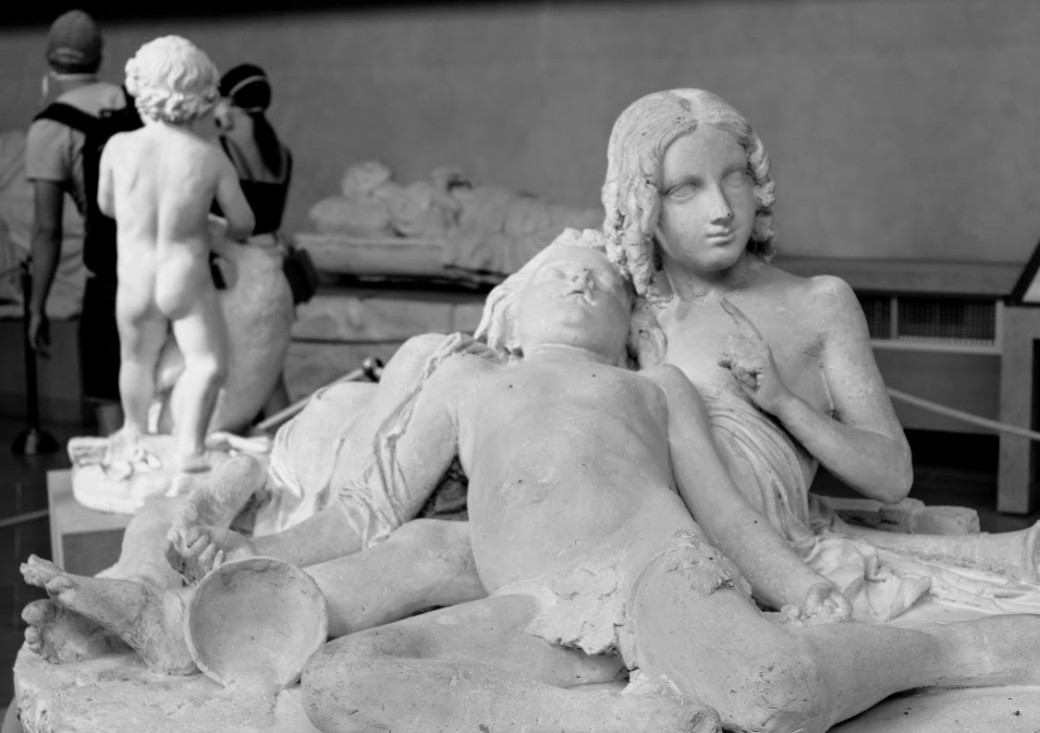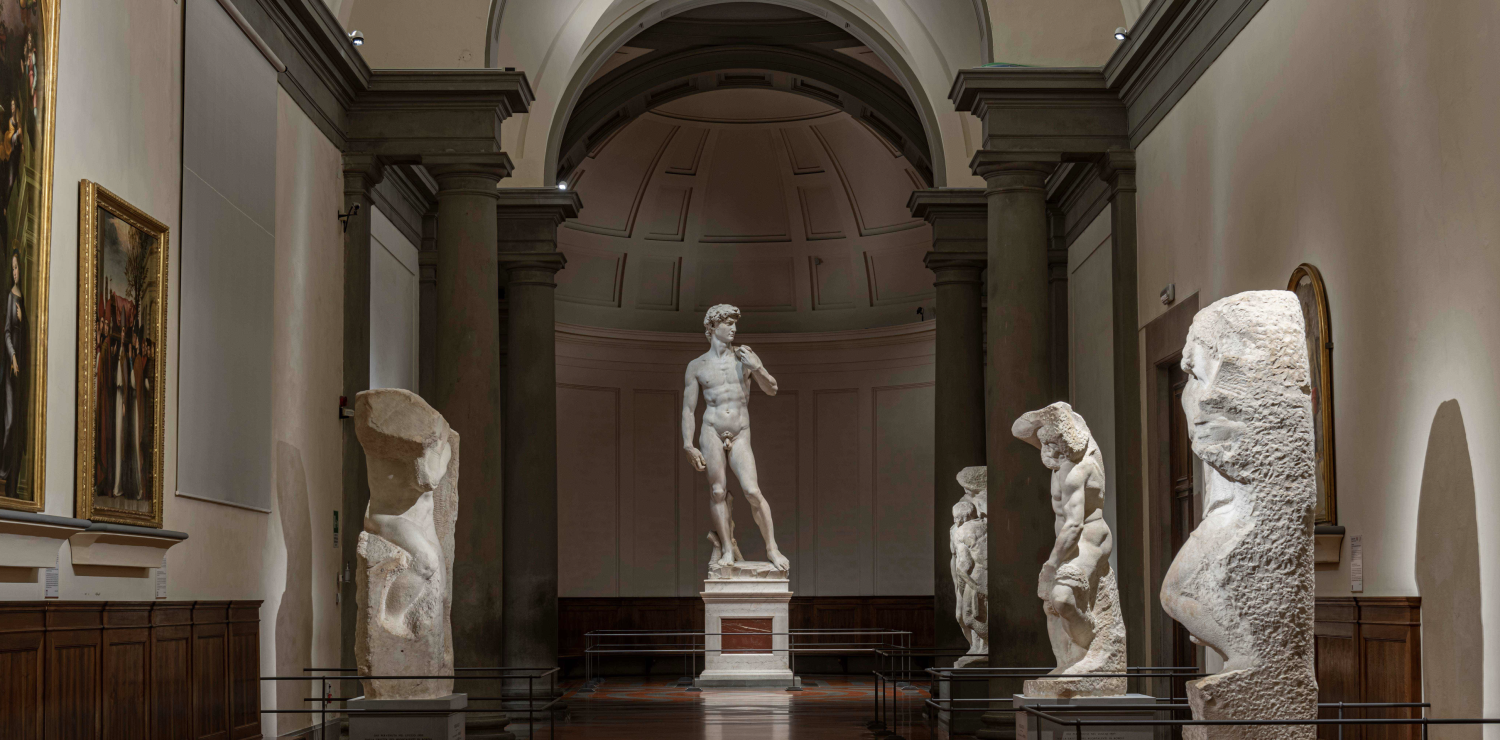Accademia Gallery: must-see rooms and artworks
Our itinerary to discover one of the most beautiful places in Florence
At the Accademia Gallery the dematerialised ticket arrives, with which you can enter, from Tuesday 7 May, simply using the QR Code/Barcode on your mobile phone. Those who book their entrance through the call centre (055 294883) or through the Gallery's official website (https://www.galleriaaccademiafirenze.it/tickets/) will receive by email directly the admission ticket to the museum without having to collect the physical ticket at the entrance. For tickets purchased in advance, until the new system comes into force, the current rules for their validation will continue to apply.
In addition, from 4 June until 26 September, every Tuesday you can visit the museum until 10 p.m. (last admission 9.30 p.m.) and every Thursday until 9 p.m. (last admission 8.30 p.m.).
 Galleria dell'Accademia di Firenze © Guido Cozzi
Galleria dell'Accademia di Firenze © Guido Cozzi A city that over the centuries had emptied of people and was populated by hospitals and convents. Too many for the enlightened Pietro Leopoldo of Lorraine, who suppressed several of them in 1784. Napoleon would later do the same. But it is thanks to these suppressions that Florence boasts the most complete collection of gold plates.
This is how the Accademia was born. Pietro Leopoldo united the hospital of San Matteo and the convent of San Niccolò and created the first school of modern art, daughter of the Accademia del Disegno, created in 1563 by Giorgio Vasari at the behest of Cosimo I. But not even a century later the protagonist was Michelangelo. We are in the years when Florence was the capital, and so in 1873 Emilio De Fabris was commissioned to create a setting for the David. The result was an exedra. In 1909 the Prigioni arrived from Buontalenti's grotto in Boboli. And in 2001 the precious collection of antique musical instruments was opened. So let's wander aimlessly.
A true jewel, the Gipsoteca of the Galleria dell'Accademia in Florence, which, after two years of renovation, in 2022 - on the occasion of the 140th anniversary of the opening of the Tribune of David to the public (July 22, 1882) - reopened to the public with a new look. BEYOND THE DAVID is the title with which director Cecilie Hollberg has presented the new Galleria dell'Accademia, underlining the fact that the museum is not only a treasure trove of Michelangelo's sculpture, beloved the world over, but also witnesses important collections linked to Florentine art that now, at last, emerge stealing the show even from David.
The renovation project also involved an in-depth study of the light that illuminates Michelangelo's David housed in the Tribune (HERE is the video with the special interview with Cecilie Hollberg, director of the Galleria dell'Accademia in Florence). The lighting design brought the dynamism of sunlight back into the David's Tribune and puts the statue even more in the foreground, while projection lighting from the frame present on both sides of the Gallery was chosen to illuminate the Prison Gallery.
In September 2023, the Accademia Gallery also acquired a new work, a painted crucifix dating from the first quarter of the 14th century, known precisely as the Corsi Crucifix, which visitors can admire inside the ground-floor rooms, alongside paintings by top Florentine artists active between the 13th and 14th centuries.
HERE not to miss our interview with Cecilia, Director of the Gallery.
SALA DEL COLOSSO
This is where the major protagonists of 15th-century Florence meet, from Domenico di Michelino to Botticelli, from Botticini to Ghirlandaio, from Paolo Uccello to Cosimo Rosselli and Baldovinetti. Or artists who wanted to be noticed at all costs, such as Giambologna who around 1580 created a 4-metre plaster cast just to show the Medici how much he was worth. The Flemish artist thus created the Rape of the Sabine Women in unbaked clay but of the same size (which is rare) as the statue (in the Loggia della Signoria). The three figures twist in a spiral offering three different points of view: Giambologna gets the spot. And the world the Mannerist sculpture. The recently restored room also contains Alesso Baldovinetti's Trinity, Perugino's Vallombrosa Altarpiece and its incredible destiny as it was requisitioned by Napoleon, and Filippino's Deposition for Santissima Annunziata. The artist died in 1505 without completing it, so the Servite Fathers had Perugino finish it, leaving us with one of the most intriguing works of art: the upper part is lively and animated, the lower part calm and soft. And again, deserving a room of its own, the only non-sacred work: the Cassone Adimari by Scheggia, Masaccio's younger brother. An expert decorator of wood, he leaves us one of the most beautiful pages of courtly life. The rich wedding in the Adimari house where guests and bride and groom dance in beautiful clothes. Just as Paolo Uccello's Thebaid should be read as a vademecum for monks. The artist, a lover of perspective, manages to include saints and aspects of monastic life. New features include a new, state-of-the-art lighting system, designed to ensure a better view of the works and energy efficiency.
 sala del colosso
sala del colosso SALE DEGLI STRUMENTI MUSICALI
Around forty instruments from the Medici and Lorraine collections, all in perfect working order. Among the gems: a cello by Niccolò Amati from 1650, some violins and a tenor viola by Stradivari intact in all its parts. There is also a marble psaltery and an oval spinet created for the Medici by Bartolomeo Cristofori, the inventor of the piano. And then drums and trumpets to satisfy the loudest tastes of the Lorraine band.
SALA DI MICHELANGELO
It presents itself as a great nave where Neoplatonic culture is offered in all its facets with the perfection of David and the imperfection of the human being, the Prisoners, who futilely aspire to the supreme without ever reaching it. They try to free themselves from the burden of physical and psychological captivity: the flesh that prevents the soul from soaring. And perhaps this is also why the artist's early work captivates us. The marble, a single block that Agostino di Duccio had attempted to work on in the mid-15th century, immediately appeared old and defective. It was a challenge that 24-year-old Michelangelo would take up at the beginning of the 16th century. He had to make a statue to put on the buttresses of the Duomo. He worked on it for four years. And in the end he made a masterpiece, in a classical key: the contraposto pose, the nudity of the ancient heroes, the anatomical perfection. Even if the hand and head are too big. But it had to be placed high up and should not go unnoticed. David, who here is no longer a boy but already a young man, is, for the first time in the history of statuary, caught in the few moments before the action: he is thinking of the exact moment when he will have to throw the stone at Goliath. We can imagine the rest. Michelangelo enters modernity by giving his protagonists the task of narrating the impending. It is 1504 and the proud Florence has driven out the Medici, executed Savonarola and is ready to challenge the Pope. David is the little hero who wins over the powerful, so he is requisitioned and placed in Piazza della Signoria, where Luigi Arrighetti's copy now stands. The fate of the Prisoners was different: they were supposed to embellish the tomb of Julius II but they never reached their destination because the pope was buried in St Peter in Chains with a greatly reduced monument. However, Michelangelo worked on it until the end and when his nephew died, he gave it to Cosimo I. It is here that enthusiasts ponder the meaning of unfinished, a typical technique of the artist who only left some parts sketched out, and incomplete. As is the case with San Matteo, also destined for the Duomo, which was left half-finished. Imperceptible differences can be seen in the different use of chisels and drills: St. Matthew does not have polished parts, which is what the prisoners have (the Atlas, the Bearded, the Young and the Rededicated). In the hypothetical transept, on either side of the David, we find some artists who left their mark on Mannerism and the Counter-Reformation, from Carlo Portelli with his scandalous Dispute on the Immaculate Conception, Bronzino, Allori and finally Santi di Tito, the greatest exponent of the sober Counter-Reformation.
GIPSOTECA
The room houses the plaster casts by Lorenzo Bartolini that his family donated to the Academy in 1850. Here are busts of artists, musicians and, above all, a host of unknown protagonists of the various grand tours who had themselves portrayed in the antique style. These include the Demidoff monument in Lungarno Serristori.
 Gipsoteca Lorenzo Bartolini
Gipsoteca Lorenzo BartoliniSALE DI GIOTTO E DEI GIOTTESCHI
The ground floor ends with three significant rooms: the first with works from Giotto's period, featuring Pacino di Buonaguida's Tree of Life with stories of Christ. The second is Giotto's fresco of a shepherd's head, which reminds us that it was he who restored the veracity of the profile portrait, a technique abandoned for centuries. His idea of perspective boxes is then very clear in the lobed panels by Agnolo Daddi, his pupil for 24 years, for the Sacristy of Santa Croce. In the last room are the works of Orcagna that open up to the International Gothic style.
FIRST FLOOR
In the succession of rooms and small halls you can admire some of the most beautiful, and often complete with frames, altarpieces from the late 14th and early 15th centuries, including the Annunciation by Giovanni del Biondo, the Enthroned Madonna by Lorenzo Monaco and the Humility (so called because it is seated on the ground) by Mariotto di Nardo.









